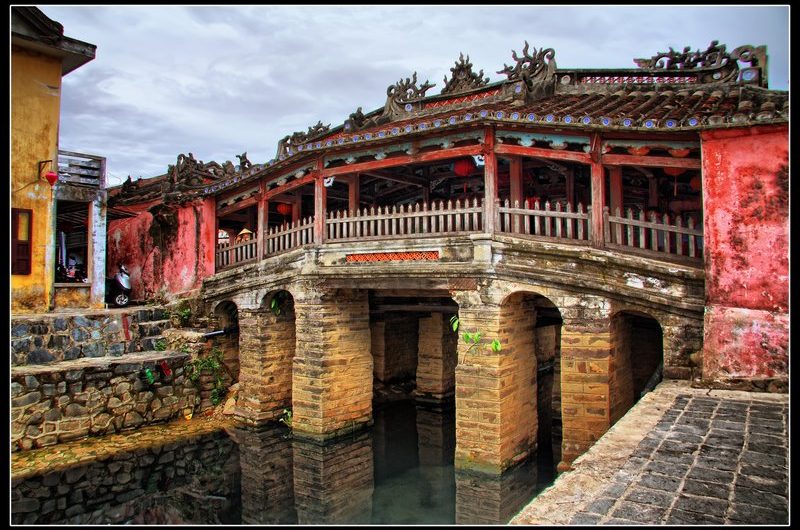The Japanese Covered Bridge, also known as Cau Pagoda, is located over a stream that flows into the Thu Bon River, along the border of Nguyen Thi Minh Khai and Tran Phu Streets in Hoi An Town, Quang Nam Province. It is the sole surviving ancient bridge in Hoi An, often referred to as the “Lai Vien” bridge. Locally, it is recognized as Cau Pagoda, a cherished landmark that has come to symbolize the Hoi An urban area.Introduction to the Japanese Bridge in Hoi An.
Where is the Japanese Bridge located?
The Japanese Bridge, also known as Cau Chua in Vietnamese, is situated north of the Hoai River, right at the entrance to the historic center of the town. It is adjacent to Tran Phu Street and Nguyen Thi Minh Khai Street, within the city of Hoi An, Quang Nam Province.
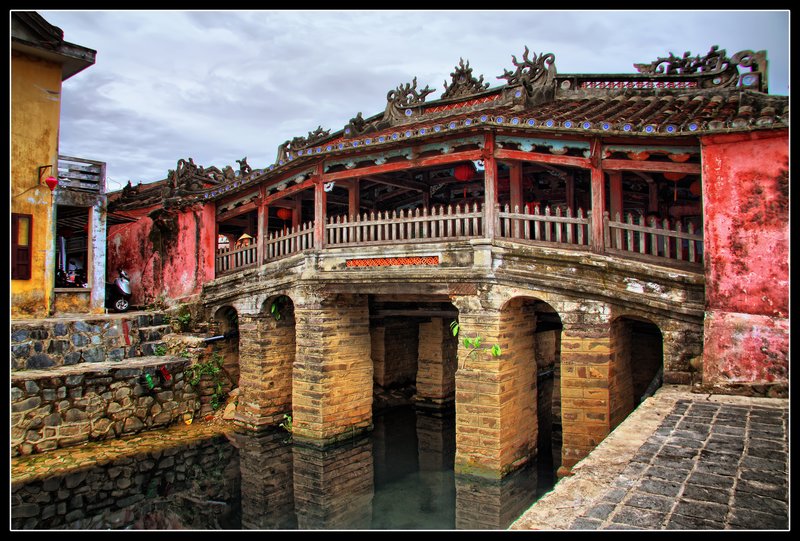
Its location is ideal and easy to find. From here, you can easily explore the ancient town and other famous sites without needing to use a motorbike.
Who is worshipped at the Japanese Bridge?
Despite being called a temple, in reality, the Japanese Bridge in Hoi An does not worship Buddha but rather the Northern Deity Tran Vu, a guardian spirit in Daoism. The local people here pay homage to this deity, believing that he will protect them from disasters and floods.
Furthermore, on both sides of the bridge, there are also shrines dedicated to the guardian spirits Linh Hau and Thien Cau. These mythical creatures serve as protectors of the bridge and temple. On special occasions such as full moons, festivals, and holidays, the local residents come here to offer prayers and offerings, seeking a safe, fortunate, and prosperous life.
The Famous Origin of Hoi An’s Japanese Bridge.
Legends of the Japanese Bridge.
In Japanese folklore, there is a water monster called Mamazu, which translates to “Cù” in Vietnamese, meaning a heron. This creature was believed to be responsible for causing natural disasters in the coastal regions it inhabited.
To control Mamazu, the Japanese people constructed a bridge in the shape of a sword piercing the creature’s back, preventing it from causing harm.
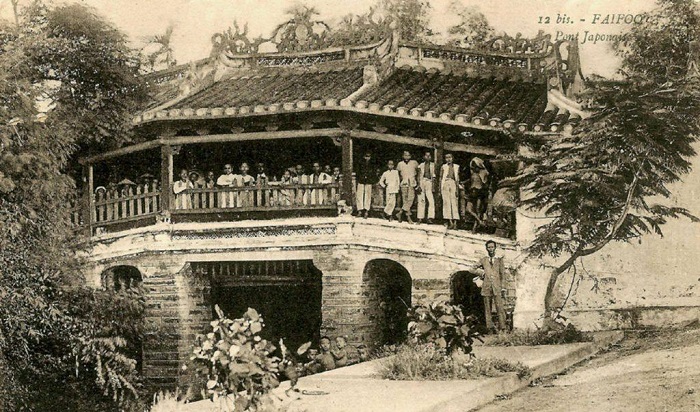
During that time, Hoi An, located along the Thu Bon River, frequently experienced flooding, causing difficulties for Japanese traders and the livelihoods of the local people.
The Japanese Bridge appeared as a spiritual anchor to help them overcome these hardships and build better lives.
History of the Japanese Bridge.
Around the 16th-17th century, during the Nguyen Dynasty’s reforms, trade expanded, and industry flourished. Hoi An was chosen as a trading port for foreign merchants to meet and exchange goods, making it a bustling and vibrant period for the town.
When Japanese merchants settled in the area, they contributed to the construction of the bridge for ease of travel, hence its name, the Japanese Bridge.
The Name of the Japanese Bridge.
In 1653, the Japanese people expanded the temple on the northern side protruding into the middle of the bridge, creating a T-shaped structure. This led to a name change to Hoi An Bridge Temple. In 1791, during a visit by Lord Nguyen Phuc Chu, it was referred to as Lai Vien Kieu. This name has been prominently inscribed on the temple’s plaque ever since.

Guide on how to get to the Japanese Bridge in Hoi An.
Hoi An’s ancient town is located approximately 30km from the center of Da Nang city. The distance is not too far, so you have various transportation options such as cars, taxis, motorbikes, tourist buses, or regular buses to get there.
If you plan to travel independently using your own vehicle, you can consider the following routes to reach the Japanese Bridge:
- First Route: From the city center, head towards Vo Van Kiet Street, Truong Sa Street, Vo Nguyen Giap Street, Lac Long Quan Street, and finally to Hoi An City.
- Second Route: From Vo Chi Cong Street, take Vo Nguyen Giap Street, Lac Long Quan Street, and reach Hoi An City.
- Third Route: From the Hue intersection, follow the signs towards Quang Nam, Vinh Dien, then turn left onto Huynh Thuc Khang Street, leading you straight into the ancient town.
TIPS: For convenient transportation to visit the Japanese Bridge and other locations in Hoi An’s ancient town without worrying about transportation, you can book a private car service with a driver in Hoi An. Our driver will pick you up at hotel in Da Nang, the airport, or any other location in Da Nang. With our private car service, you can save a lot of time on your day trip from Da Nang to Hoi An with DanangPrivateCar.com’s. Book your trip with us today to have a memorable travel experience.
Information about the operating hours and ticket prices for the Japanese Bridge in Hoi An.
Opening Hours of the Japanese Bridge.
Opening hours: In the morning from 9 AM to 11 AM, and in the afternoon from 3 PM to 10 PM. During these hours, the Japanese Bridge is open for visitors to offer incense and offerings, seeking blessings and success. However, there are no specific restrictions on visiting and taking photos outside of these hours.
Ticket Price for Visiting the Japanese Bridge.
If you wish to visit historic houses, assembly halls, museums, etc., in the ancient town, you are required to purchase a ticket priced at 80,000 VND per person. However, for the Japanese Bridge, there is no entrance fee. This site is located outside the designated heritage area of the ancient town and is free to visit.
See More: Ticket price list to visit Hoi An ancient town updated to the latest 2023
The Best Time to Visit the Japanese Bridge in Hoi An?
According to the experience of DanangPrivateCar.com’s, you should research and choose the appropriate time to check-in at the Japanese Bridge. Most tourists come here to admire its architecture and take Instagram-worthy photos.
Typically, the period from March to August is considered the “golden time.” During this time, the weather is clear, the sun shines brightly, and the scenery is incredibly beautiful. It’s suitable for sightseeing, exploration, and combining with a visit to the beach. However, be aware that the weather can be quite hot and uncomfortable, especially in June and July. It’s advisable to visit around 9 AM in the morning or between 2 PM and 3 PM in the afternoon when there is less crowding.
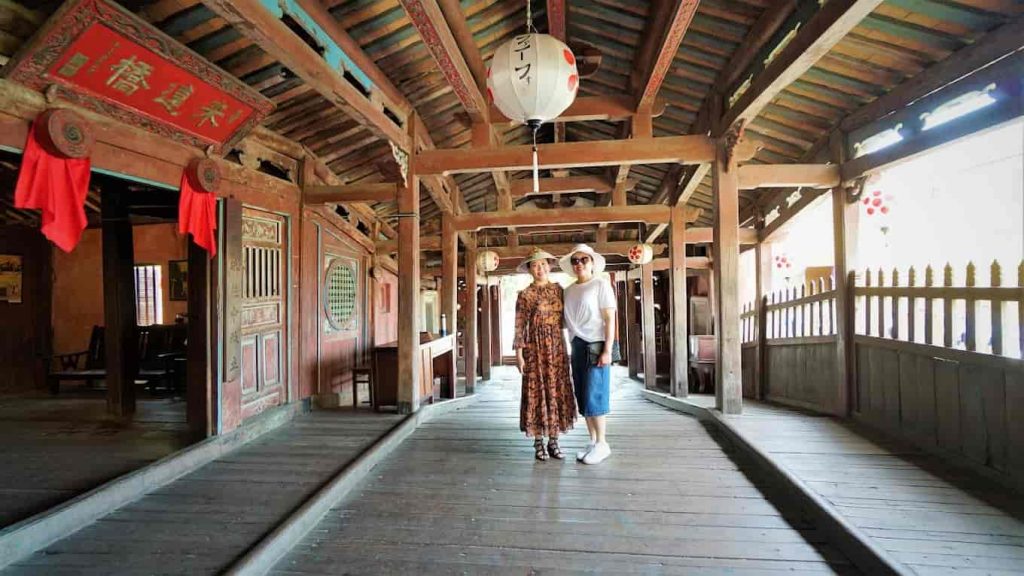
In addition, January and the early part of February are also decent choices. It’s best to avoid the late months of the year because that’s when Hoi An experiences the flood season.
REFERENCE: When is the best time to visit Hoi An, even better than the locals?
What Makes Hoi An’s Japanese Bridge Unique and Attractive to Tourists?
In addition to the fact that it’s a temple, but not dedicated to Buddha, the Japanese Bridge in Hoi An has many other unique aspects worth exploring.
The Temple with Distinctive Japanese Architecture.
The reason it’s called the Japanese Bridge is due to its distinctive Japanese architectural style. The temple is constructed from wood on stone pillars, with dimensions of approximately 18 meters in length and 3 meters in width. Its roof is adorned with Yin and Yang tiles, and above the main entrance hangs a large sign inscribed with three Chinese characters: “Lai – Vien – Kieu.”
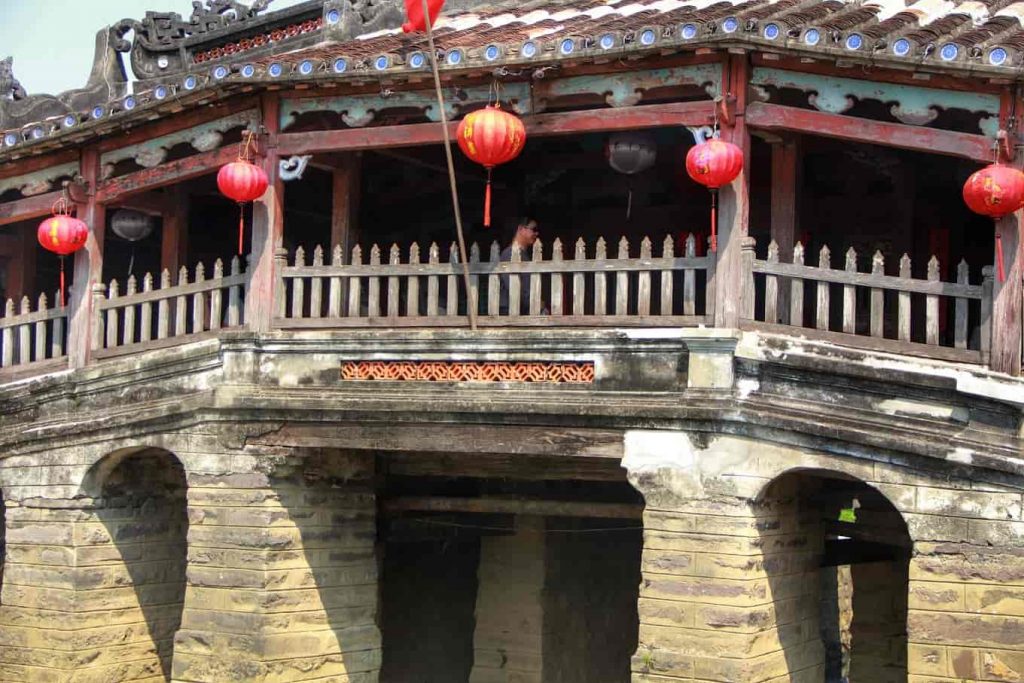
Both the temple and the bridge are made of wood, intricately carved and painted in eye-catching colors, facing the riverbank. At the temple’s gate, one side features a statue of a monkey, and the other side features a statue of a dog. When viewed from a distance, the Japanese Bridge appears graceful like a rainbow, blending ancient charm with a touch of modernity.
Hoi An’s Japanese Bridge – A Place of Cultural Confluence.
Historically, Hoi An was a bustling trading port, a meeting place for merchants from various countries around the world. Therefore, it’s easy to understand why this place boasts a unique blend of cultures.
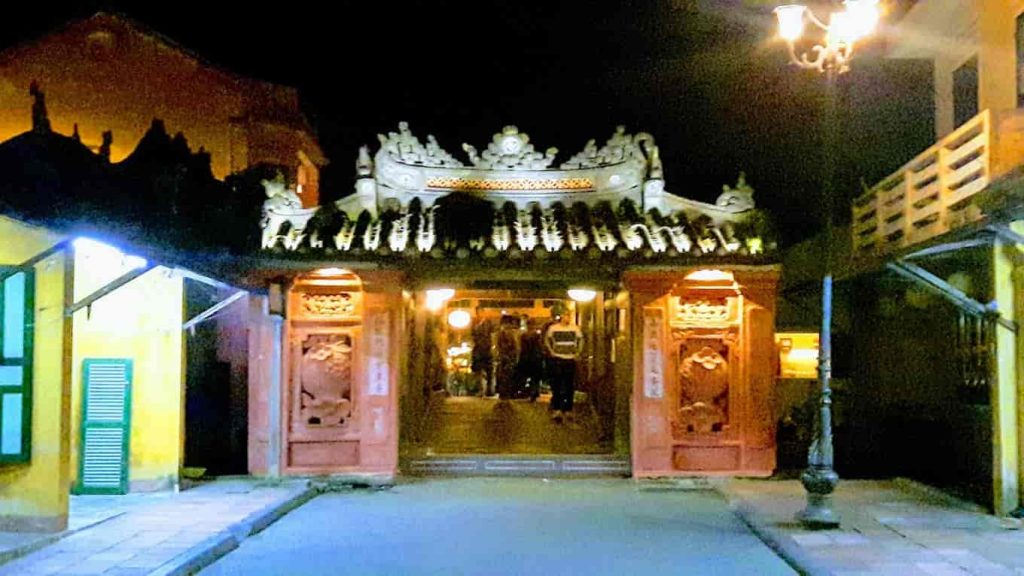
Apart from assembly halls and ancient houses with distinct Chinese and French influences, the Japanese Bridge stands as evidence of architectural exchange between Vietnam, Japan, and China. This is evident through its delicate lines and distinctly East Asian design.
The Japanese Bridge Featured on Vietnamese Currency.
It’s not a coincidence that the Japanese Bridge in Hoi An was chosen to be featured on the 20,000 Vietnamese dong banknote. The polymer banknote, with one side featuring an image of the Japanese Bridge, was issued in 2006 and is still in circulation today.
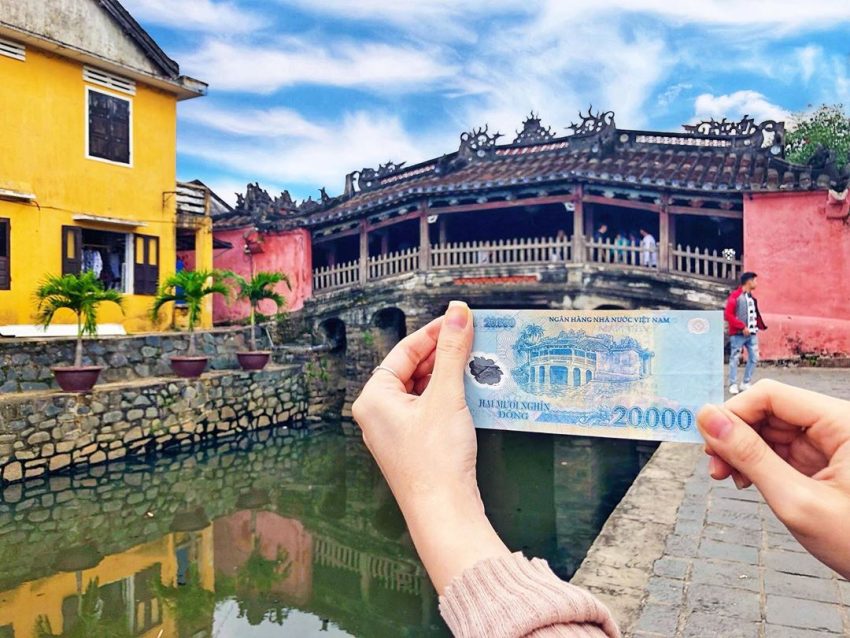
This reflects the immense significance and value of this temple, both spiritually and in practical terms.
The Japanese Bridge Integral to the Lives of the Ancient Town’s Residents.
The bridge is not just evidence of historical events and Hoi An’s trading history but is also an integral part of the lives of the town’s residents. It plays a role in regulating traffic and facilitating transportation within the ancient town.
Furthermore, this location is also chosen as a place for religious activities related to water protection and mythical water creatures.
A Vintage and Unique Check-In Spot for the Youth.
As a historically significant bridge with unique architecture that bears the imprint of time, the Japanese Bridge has become a must-visit destination for tourists in Hoi An.
Here, you can freely choose your attire, whether it’s a gentle, stylish, or bold and unique style, and strike poses for photos that turn out beautifully.
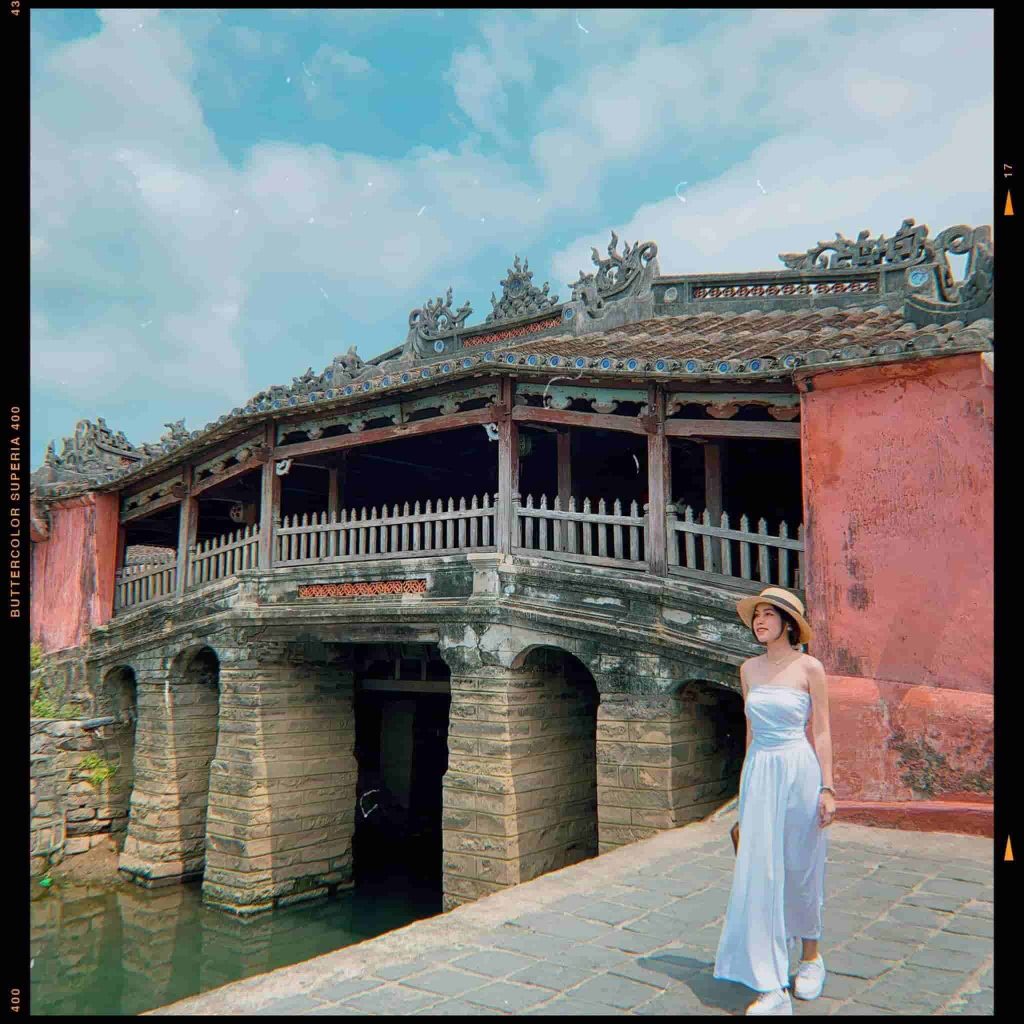
SEE MORE: Hoi An Lantern Street | The most dazzling check-in point in the ancient town.
Hotels and Restaurants near the Japanese Bridge in Hoi An.
Restaurants and Eateries near the Japanese Bridge.
When you visit Hoi An and explore the Japanese Bridge and other tourist spots, be sure to try some of the local specialties. Since Hoi An’s ancient town is at the center, you’ll find numerous restaurants and eateries offering dishes like “mi quang” (turmeric noodles), “cao lau” (Hoi An’s signature noodle dish), white rose dumplings, bao buns, grilled meat and rice paper rolls, “banh beo” (water fern cake), corn pudding, and assorted sweet soups.
Here are some renowned dining places shared by DanangPrivateCar.com:
- Van Loc Restaurant: 27 Tran Phu, Minh An, Hoi An.
- Hong Phuc Restaurant: 43 – 45 Tran Hung Dao, Minh An, Hoi An.
- Faifo Xua Restaurant: 66 Nguyen Thai Hoc, Minh An, Hoi An.
- Vinh Hung Restaurant: 1 Chau Thuong Van, Minh An, Hoi An.
Additionally, if you’re out and about in the afternoon and evening, you’ll find street vendors in the vicinity of the Japanese Bridge. They offer a variety of dishes with simple plastic tables and chairs. The food is delicious, and the prices are often more budget-friendly compared to restaurants.
Hotels near the Japanese Bridge in Hoi An for Accommodation.
Choosing accommodation near the center of the ancient town can be a bit challenging, not because there’s a shortage of options, but because there are so many beautiful hotels and homestays that it can be overwhelming to decide. To make your choice, consider your purpose, preferences, and budget. Here are some recommendations:
- River Suites Hoi An Hotel: 4 Nguyen Du, Minh An, Hoi An.
- Volar de Faifo Villa: 132 Ngo Quyen, Minh An, Hoi An.
- Silkotel Hoi An: 14 Hung Vuong, Cam Pho, Hoi An.
- Laluna Hoi An Riverside Hotel & Spa: 12 Nguyen Du Minh An, Hoi An.
- The View Homestay Hoi An: 28/6 Tran Hung Dao, Son Phong, Hoi An.
Based on experience, if your goal leans more toward relaxation than exploration, consider selecting hotels or homestays a bit farther from the town center. You could choose places near An Bang Beach, Cua Dai Beach, or close to Tra Que Vegetable Village, for instance.
However, if you prefer convenience for sightseeing and getting around, staying near the town center is a good option. Just keep in mind that central accommodations can be quite pricey, and most rooms have a classic, timeless charm that matches the beauty of the ancient town.
Other Temples to Visit Besides the Japanese Bridge in Hoi An.
If you enjoy exploring spiritual destinations, apart from the Japanese Bridge, Hoi An boasts many other equally enticing temples.
Ong Temple.
- Address: 24 Tran Phu, Cam Chau Ward, Hoi An.
Ong Temple was constructed in the early 17th century and is over 400 years old to date. Not only does it feature unique architecture, but it also preserves the long-standing traditional cultural values of the ancient town.
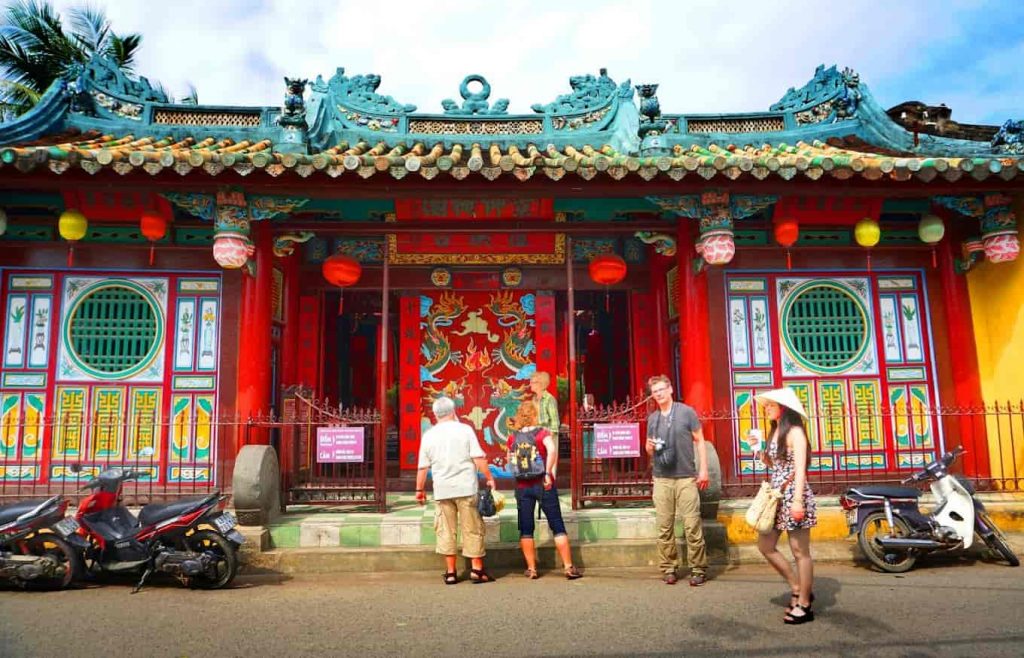
Currently, Ong Temple houses precious ancient artifacts and stone steles, poems, and folk parables. The temple hosts various festivals each year, such as the New Year’s Day festival, Ong Temple festival, and Quan Hien Thanh Temple festival, attracting a large number of tourists.
Ba Mu Temple.
- Address: 675A Hai Ba Trung, Hoi An.
Nestled within the ancient town, with intricately carved walls and a serene lake reflecting the deep blue sky, Ba Mu Temple in Hoi An has become a hot spot for young people seeking Instagram-worthy photos.
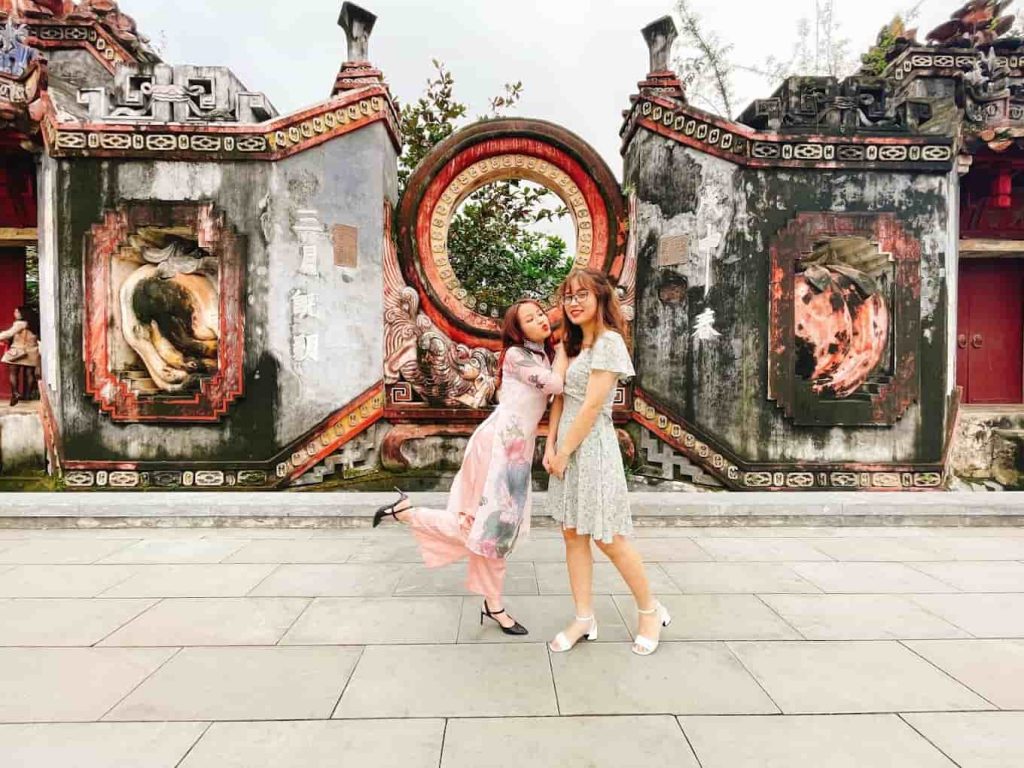
This is also one of the famous historical sites in addition to the Japanese Bridge. The temple plays an important role in the spiritual life of the local people.
Phap Bao Temple.
- Address: Phan Chu Trinh Street, Minh An Ward, Hoi An.
During your journey through the ancient town of Hoi An, don’t miss Phap Bao Temple – the largest temple in this area.
Phap Bao Temple impresses visitors with its long-standing historical values, unique architectural style, and solemn decoration. It provides a nostalgic and profoundly traditional atmosphere. While it may not be an ideal place for taking selfies, you will feel a sense of tranquility and inner peace as you contemplate the temple’s surroundings.
What to Keep in Mind When Visiting Hoi An’s Japanese Bridge?
As a famous tourist destination, almost everyone who comes to Hoi An pays a visit to the Japanese Bridge. Therefore, it’s always crowded here. To have an enjoyable visit and capture beautiful photos, keep these things in mind:
- First: Even though the Japanese Bridge doesn’t worship Buddha but rather deities, when visiting, you should dress modestly and avoid overly revealing clothing. Also, remember to speak quietly and avoid loud laughter to maintain the solemn atmosphere and not disturb others.
- Second: If you’re a history enthusiast, enjoy learning about culture, and want to know more about Hoi An’s Japanese Bridge, consider hiring a tour guide to hear fascinating stories about it. Otherwise, you can join a Hoi An tour with a tour guide who will provide explanations.
- Third: The Japanese Bridge is located in the central area, and besides sightseeing, you can also participate in various street games and performances that take place from 7:00 PM to 8:30 PM daily.
- Fourth: This place is a prime spot for taking photos. If you want beautiful pictures, prepare lovely outfits and don’t forget to bring a good camera.
- Fifth: Next to the Japanese Bridge, there are many small drink stalls with simple plastic tables and chairs. After exploring and taking photos to your heart’s content, you can drop by here, order a drink, and enjoy the view of the Japanese Bridge and the bustling crowd passing by.
Having endured centuries of history and numerous changes, Hoi An’s Japanese Bridge still stands proudly, bearing witness to the passage of time. Its presence adds to the ancient charm of the Old Town. So, when people visit the Old Town, they seek out and visit this iconic bridge to admire and experience it.

